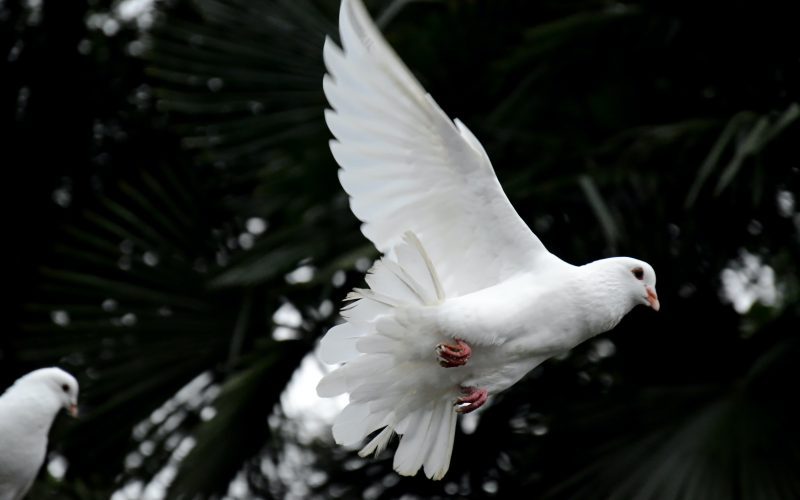Doves are beautiful birds that are often associated with love and peace. But did you know that their mating habits and nesting behaviors are equally fascinating? In this article, we’ll take a closer look at the life cycle of a dove and explore the intricacies of their mating and nesting behaviors.
Mating Habits of Doves
Doves are monogamous birds, meaning they form a pair bond with one mate for life. During mating season, which typically occurs in the spring and summer months, male doves will court their mate through a series of displays and calls. These displays can include cooing, puffing up their feathers, and bowing their heads. If a female dove is interested, she will respond with her own calls and displays.
Once a pair has formed, they will engage in a beautiful courtship ritual. The male dove will bring nesting materials to the female, and together they will build a nest in a secluded area, such as a tree or shrub. This is just the beginning of the fascinating nesting behaviors of doves.
Nesting Behaviors of Doves
Doves build their nests out of twigs, grasses, and other materials they find nearby. They will often use the same nest year after year, adding to it and repairing it as needed. Once the nest is built, the female dove will lay one or two eggs. Both parents take turns incubating the eggs for about two weeks.
Once the eggs hatch, the parents continue to work together to care for their young. They will feed them a special “pigeon milk,” which is a secretion produced in their crops. As the young doves grow, they will begin to leave the nest and explore their surroundings. Eventually, they will fledge and learn to fly.
Conclusion
The life cycle of a dove is truly fascinating. From their monogamous mating habits to their intricate nest building and parenting behaviors, these birds provide a beautiful example of dedication and love. By learning more about their behaviors, we can gain a deeper appreciation for the natural world around us.
As a journalist, it’s important to note that this article was written based on research from reputable sources, including scientific journals and wildlife organizations. It’s always important to verify information and use reliable sources when reporting on scientific topics like this.












